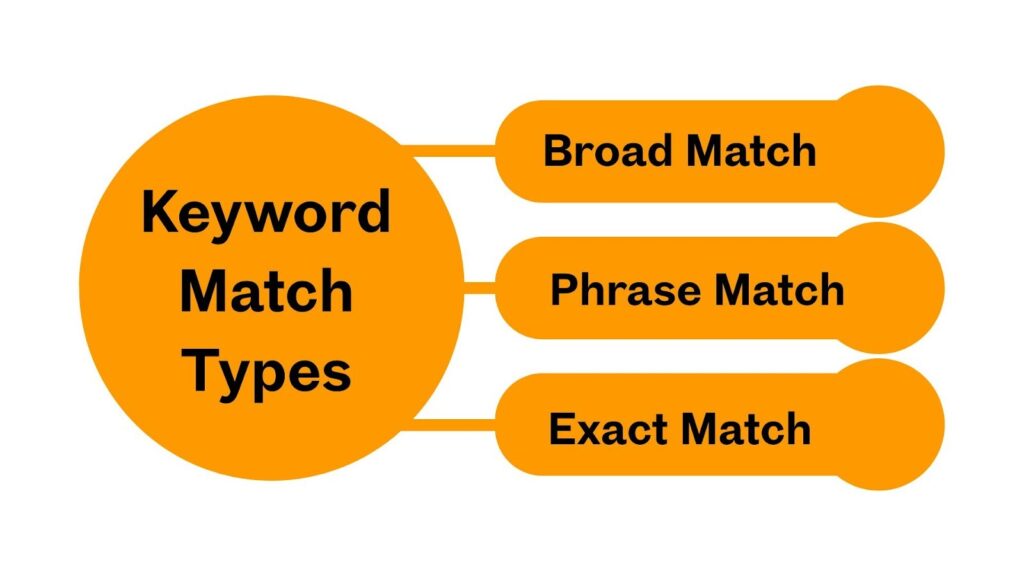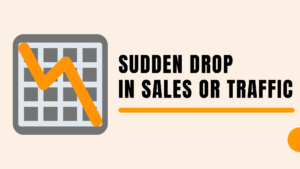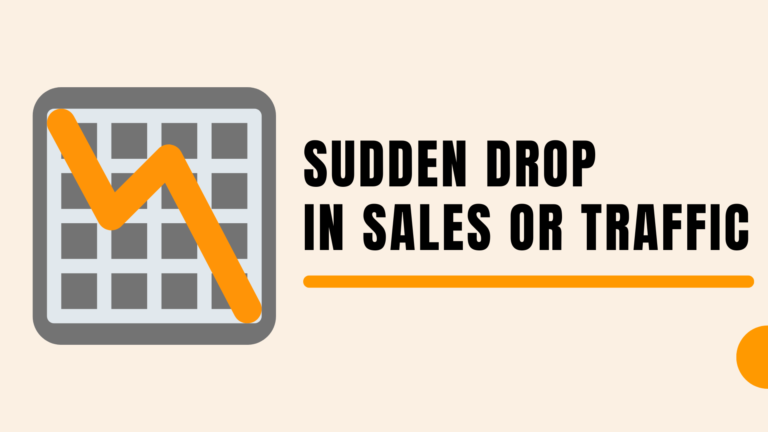One of the quickest and simplest ways to raise your product visibility to drive sales is to run an Amazon PPC campaign. Amazon had a staggering 2.8 billion visitors in May 2025 and is one of the largest online marketplaces, where visibility can equal sales. However, if your ads are not managed correctly, your budget can get depleted quickly.
In the guide, we will deconstruct the 10 most common mistakes in Amazon PPC made by experienced sellers and demonstrate how to prevent them.
Ignoring Keyword Match Types
The three major types of keyword matches that Amazon provides are broad, phrase, and exact matches. Each type determines how closely a shopper’s search must match your keyword for your advertisement to be displayed.
Overusing broad match can waste ad spend, as your ads may appear for irrelevant searches. An example is a keyword like ‘running shoes,’ which might lead to ads for shoe racks or shoe polish, but not necessarily result in converted clicks.

To prevent it, adopt a moderate policy. Start with exact match for proven, high-converting keywords; use phrase match next, and reserve broad match mainly for keyword discovery. Review your Search Term Report periodically to determine which terms are bringing in good revenue, and then modify your match types to achieve the highest ROI.
| IMPORTANT: Regularly reviewing and adjusting your keyword match types ensures your ads reach the right audience while minimizing wasted spend. This simple habit can significantly improve targeting accuracy and overall campaign ROI. |
Not Using Negative Keywords
Negative keywords are crucial for preventing your ads from appearing in irrelevant searches. When you skip this step, you’re making one of the most common Amazon PPC mistakes, allowing your ads to show up for shoppers who have no intention of buying your product. This oversight can quickly burn through your budget without delivering meaningful results.
For example, if you sell “leather handbags” but don’t add “fake” or “synthetic” as negative keywords, your ads could appear for “synthetic handbags” searches, leading to wasted clicks and low conversion rates.
To fix this, build and maintain a negative keyword list. Review your Search Term Report regularly to spot terms that attract unqualified traffic. Add those as negative keywords at either the campaign or ad group level.
This simple habit improves targeting accuracy, reduces wasted spend, and increases your campaign’s overall efficiency, helping you avoid one of the biggest Amazon PPC mistakes sellers make.
Setting and Forgetting Campaigns
Amazon PPC campaigns require ongoing monitoring and continuous improvement. Most sellers commit the error of establishing their campaigns and then abandoning them, assuming that they will continue to work in the long term.
In practice, the market environment, keyword competition, and shopper behavior constantly change; failure to address these changes will result in poor performance and wasted advertising money.
Bids will become ineffective without frequent adjustments, irrelevant keywords may remain active, and high-performing terms may fail to receive adequate funding. The outcome is the lost opportunities and poor utilization of resources.
To prevent this, review your campaigns at least once a week. Monitor performance in terms of ACoS, CTR, and conversion rate, and adjust bids, budgets, and keywords accordingly to optimize performance trends. Regularly optimizing your campaigns makes them profitable and adaptable to changes in the Amazon dynamic marketplace.
Ignoring Search Term Reports
One of the most potent tools in Amazon PPC is Search Term Reports, which are often overlooked by many sellers. These reports tell you the precise search words that your customers entered and then clicked on your ads, which in turn provides you with clear information about what is converting and what is burning your cash.
Failure to analyze this data will deprive you of the opportunity to discover profitable keywords or eliminate poor ones. In its absence, your campaigns can still be spending on irrelevant traffic and missing high-value opportunities.
Get used to reviewing your Search Term Reports weekly. Add new keywords that are high-converting search phrases (marked in either exact or phrase match), and tag irrelevant keywords as negative keywords. This basic routine focuses your targeting, enhances the relevancy of your ads, and uses every dollar of your ad budget.
Poor Campaign Structure
One of the greatest obstacles to the performance of the Amazon PPC is a poorly structured campaign. With too many products or irrelevant keywords in one campaign or ad group, it is challenging to determine what is actually working, and it can be nearly impossible to make data-driven changes.
For example, performance information can be distorted when various types of products are grouped under a single campaign. You will not be able to know what product or keyword sells, thus making a poor bid choice and allocating the budget inefficiently.
To limit this, you should structure your campaigns according to product category, match type, or advertising goal. Similar items should be grouped together to achieve a distinct focus and performance that can be measured per campaign. The benefit of a properly organized PPC account is that it makes optimization easier, allows you to easily control your bids, and grow in a clear and precise manner.
Overbidding on Broad Keywords
Bidding too aggressively on broad keywords quickly drains your ad budget without guaranteed returns. Broad match keywords are, by nature, very broad, and in most cases, your ads will be activated when people are searching for something that is not directly related.
Although this is helpful in the discovery process, overbidding implies that you are paying a high price per click, which may not translate into a conversion.
For example, when your keyword is ‘yoga mat’ and you aggressively bid, your advertisement may be shown on a gym flooring ad or workout accessories, where a shopper is not even interested in your product.
To prevent this, give the broad match keywords lower bids and give more emphasis on exact or phrase matches that have been proven to convert. Search Term Reports reveal which broad keywords attract irrelevant clicks. Use these to narrow your focus. A balanced bidding strategy helps capture relevant traffic and maintain a healthy ACoS.
Ignoring Product Listing Optimization
The best PPC program will not work if your product listings are not optimized. The low quality of the pictures, unfinished descriptions, and poorly written titles will drive traffic to low click-through rates (CTR) and low conversions, which will waste your advertising budget.
Listings with high conversion are also rewarded by the algorithm of Amazon. Unless your product page is attractive or understandable, you not only will lose prospective customers, but also will eventually see the performance of your ad drop.
Always ensure that your listings are optimised to the best; you should use good quality pictures, a title with keywords, well-defined points, and a persuasive product description before launching or scaling any PPC campaign.
An optimized listing generates trust in shoppers, increases conversion rates, and makes sure that each click of your PPC campaign has a high likelihood of becoming a sale.
Not Testing Different Ad Types
The problem with using only one type of ads, typically Sponsored Products, is that it limits your reach and data insights. Amazon has several types of ads, among them Sponsored Brands and Sponsored Display, which can be used on various stages of the customer journey. Not taking these alternatives is equivalent to foregoing high traffic and good brand exposure.
Sponsored Brands help increase visibility at the top of search results, which are best suited to create brand awareness. Sponsored Display, in its turn, enables you to retarget shoppers who have watched your products or those related to them, which will help you to recover potential customers.
In order to prevent such a mistake, diversify your PPC strategy. Trial various types of ads, review the performance indicators, including impressions, CTR, and conversion rate, and invest in the most efficient types. The combination of the types of ads forms a more balanced funnel, increasing the level of brand recognition and the possibility of conversion.
Lacking a Clear Budget and Bidding Strategy
Operating Amazon PPC activities without an adequate budget and a bidding plan is like driving a car without a map; you are moving, but not in the right direction. Most vendors waste money on campaigns that are not working, or they do not invest enough in the ones that can lead to profitability.
The first step in any successful PPC plan will be to have a clear budget, depending on what you are aiming to accomplish: maximize your visibility, keep your ACoS at a given level, or make a profitable expansion. Then, choose a bidding strategy that aligns with your goals.
For example, Dynamic Bids -Down Only is effective in cost control, Up and Down in competitive placements, and Fixed Bids in full control.
Periodically check performance data and reallocate your budget to high ROI campaigns and suspend or reallocate non-performers. A systemized budget and bidding plan ensure that your expenditure is cost-effective, your margins are healthy, and your PPC plan is sustainable over the long run.
| OPPOSITE VIEW: Some sellers argue that having a strict budget or rigid bidding strategy can actually limit growth. They believe that flexibility, especially during product launches or peak seasons, allows campaigns to capture more data and visibility faster. |
Ignoring ACoS and TACoS Metrics
Many sellers focus on ACoS (Advertising Cost of Sales) rather than TACoS (Total Advertising Cost of Sales), which leads them to lose sight of ad performance as a whole. While ACoS measures the effectiveness of your investment based on an immediate sale metric, TACoS measures the ad performance based on your total revenue, including organic growth.

Having a low ACoS may look good as a metric. Still, unless your total sales are actually increasing, your ads may not be effective in the long term. On the other hand, an increase in TACoS of only a few percent would mean that your ads are improving organic ranking and brand awareness, both of which are important for long-term growth.
To avoid this mistake, track both. Measure the ad’s short-term success with ACoS and measure your long-term profitability with TACoS. The balanced approach helps optimize short- and long-term efforts in the competitive Amazon marketplace.
Conclusion
Successful Amazon PPC means more than just setting up ads; it needs continuous analysis, optimization, and planning. It is possible to prevent these ten mistakes and convert wasted ad spend into quantifiable growth.
Continue optimizing your campaigns, monitor your metrics, and respond to shifts in the market. In the long run, such minor, clever adjustments will accumulate to greater visibility, greater conversions, and profitability in the long run in Amazon.
FAQs
1. How often should I be optimizing my Amazon PPC campaigns?
It’s best practice to review and optimize your campaigns at least once a week, take stock of your ACoS, CTR, and conversions, and make adjustments to your bids, keywords, and budgets as needed based on an analysis of performance patterns. Weekly optimization keeps you in line with changing competitive pressure and buyer intentions.
2. What is the difference between ACoS and TACoS?
ACoS measures how efficiently your ads generate direct sales, while TACoS indicates how your ads influence your total revenue, including organic growth. This provides a better picture of both short- and long-term campaign effectiveness by tracking ACoS and TACoS.
3. How do I lower my ad spend while still maintaining visibility?
You can optimize your ad spend, assuming sales traction is happening, by only bidding higher on high-converting keywords, adding negative keywords to stop irrelevant searches, and sticking to exact or phrase match types. You can also optimize your product listing to improve conversion rate – that way, every click you pay for will have a higher chance of a sale in the end.








